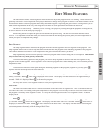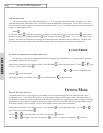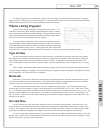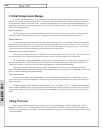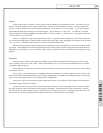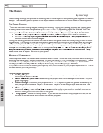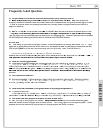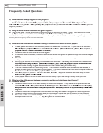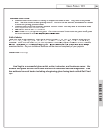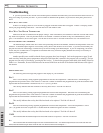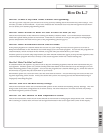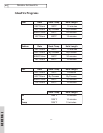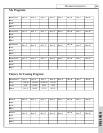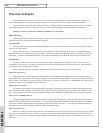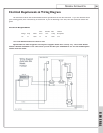
29
G L A S S 1 0 1
Stainless Steel Forms:
•
Stainless steel forms come in a variety of shapes and sizes as well. They have to be primed
also. The slick surface makes priming diffi cult. The form can be sanded, sandblasted or heated
Stainless steel forms come in a variety of shapes and sizes as well. They have to be primed
also. The slick surface makes priming diffi cult. The form can be sanded, sandblasted or heated
Stainless steel forms come in a variety of shapes and sizes as well. They have to be primed
to make the priming process easier.
also. The slick surface makes priming diffi cult. The form can be sanded, sandblasted or heated
to make the priming process easier.
also. The slick surface makes priming diffi cult. The form can be sanded, sandblasted or heated
•
Stainless steel forms are extremely durable “forever” molds. But they tend to be several times
to make the priming process easier.
Stainless steel forms are extremely durable “forever” molds. But they tend to be several times
to make the priming process easier.
more expensive than ceramic molds.
Stainless steel forms are extremely durable “forever” molds. But they tend to be several times
more expensive than ceramic molds.
Stainless steel forms are extremely durable “forever” molds. But they tend to be several times
•
Steel forms should also be sanded and re-primed if there are pits or cracks in the coating.
more expensive than ceramic molds.
Steel forms should also be sanded and re-primed if there are pits or cracks in the coating.
more expensive than ceramic molds.
•
Steel cools
Steel forms should also be sanded and re-primed if there are pits or cracks in the coating.
Steel cools
Steel forms should also be sanded and re-primed if there are pits or cracks in the coating.
more quickly
Steel forms should also be sanded and re-primed if there are pits or cracks in the coating.
more quickly
Steel forms should also be sanded and re-primed if there are pits or cracks in the coating.
than the glass. The metal contracts underneath the glass which gives
Steel forms should also be sanded and re-primed if there are pits or cracks in the coating.
than the glass. The metal contracts underneath the glass which gives
Steel forms should also be sanded and re-primed if there are pits or cracks in the coating.
more quickly than the glass. The metal contracts underneath the glass which gives more quickly
Steel forms should also be sanded and re-primed if there are pits or cracks in the coating.
more quickly
Steel forms should also be sanded and re-primed if there are pits or cracks in the coating.
than the glass. The metal contracts underneath the glass which gives
Steel forms should also be sanded and re-primed if there are pits or cracks in the coating.
more quickly
Steel forms should also be sanded and re-primed if there are pits or cracks in the coating.
the room needed to slide the draped piece off the form.
more quickly
the room needed to slide the draped piece off the form.
more quickly
than the glass. The metal contracts underneath the glass which gives
the room needed to slide the draped piece off the form.
than the glass. The metal contracts underneath the glass which gives
more quickly than the glass. The metal contracts underneath the glass which gives more quickly
the room needed to slide the draped piece off the form.
more quickly than the glass. The metal contracts underneath the glass which gives more quickly
A bit of advice:
Take your time in the beginning. Start with a bunch of small, 2” x 2” or 4” x 4” square, super fast (no
time consuming pattern) projects. Use them to establish a relationship with your kiln and with fusing
Take your time in the beginning. Start with a bunch of small, 2” x 2” or 4” x 4” square, super fast (no
time consuming pattern) projects. Use them to establish a relationship with your kiln and with fusing
Take your time in the beginning. Start with a bunch of small, 2” x 2” or 4” x 4” square, super fast (no
materials. Take accurate notes so you can repeat the successful projects and learn how to avoid the
time consuming pattern) projects. Use them to establish a relationship with your kiln and with fusing
materials. Take accurate notes so you can repeat the successful projects and learn how to avoid the
time consuming pattern) projects. Use them to establish a relationship with your kiln and with fusing
failures. Don’t think you won’t be having any fun. Some of the best work comes from loose design
materials. Take accurate notes so you can repeat the successful projects and learn how to avoid the
failures. Don’t think you won’t be having any fun. Some of the best work comes from loose design
materials. Take accurate notes so you can repeat the successful projects and learn how to avoid the
exercises like this. As your confi dence builds so will the size and complexity of your projects.
failures. Don’t think you won’t be having any fun. Some of the best work comes from loose design
exercises like this. As your confi dence builds so will the size and complexity of your projects.
failures. Don’t think you won’t be having any fun. Some of the best work comes from loose design
Good Luck!
Lisa Vogt
GLASS FUSING 101
Lisa Vogt is a successful glass artist, writer, instructor, and business owner. Her
artwork and glass articles have been featured in numerous national magazines. Lisa
has authored several books including a beginning glass fusing book called Get Fired
Up!



